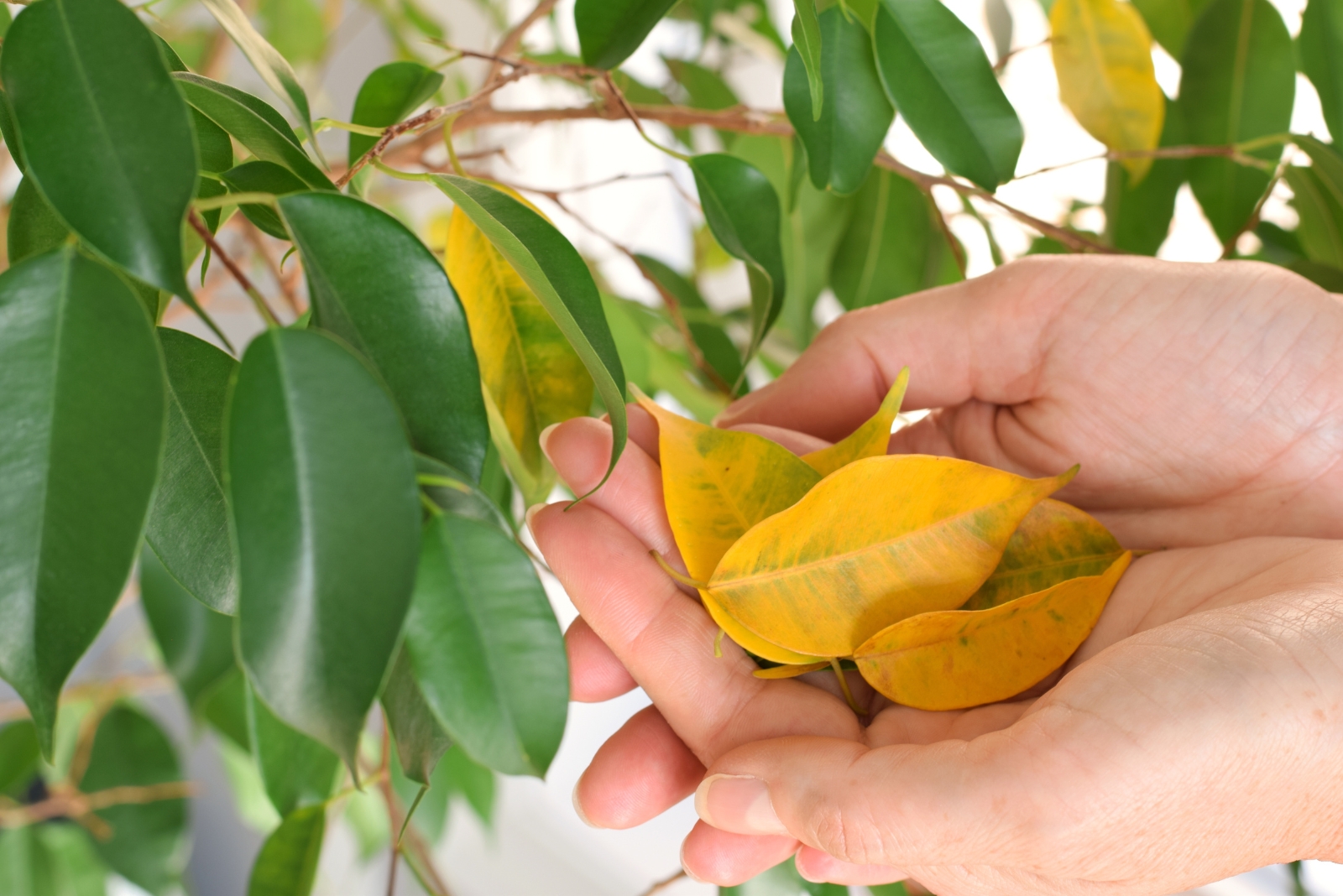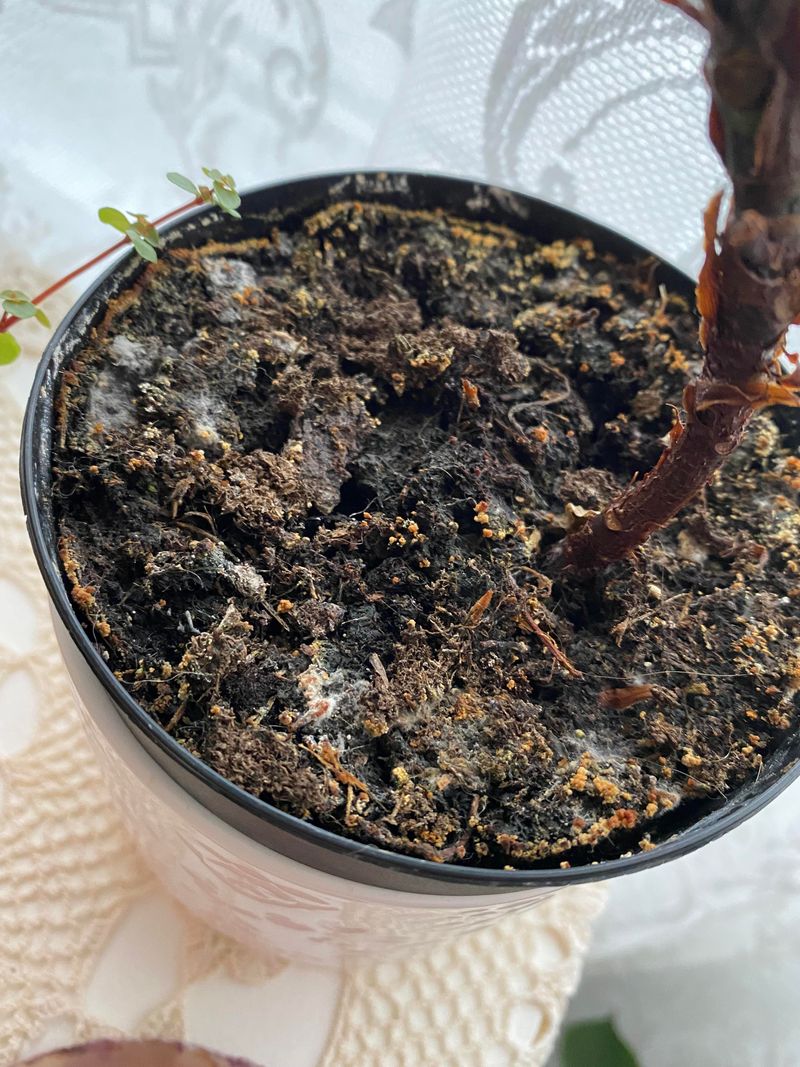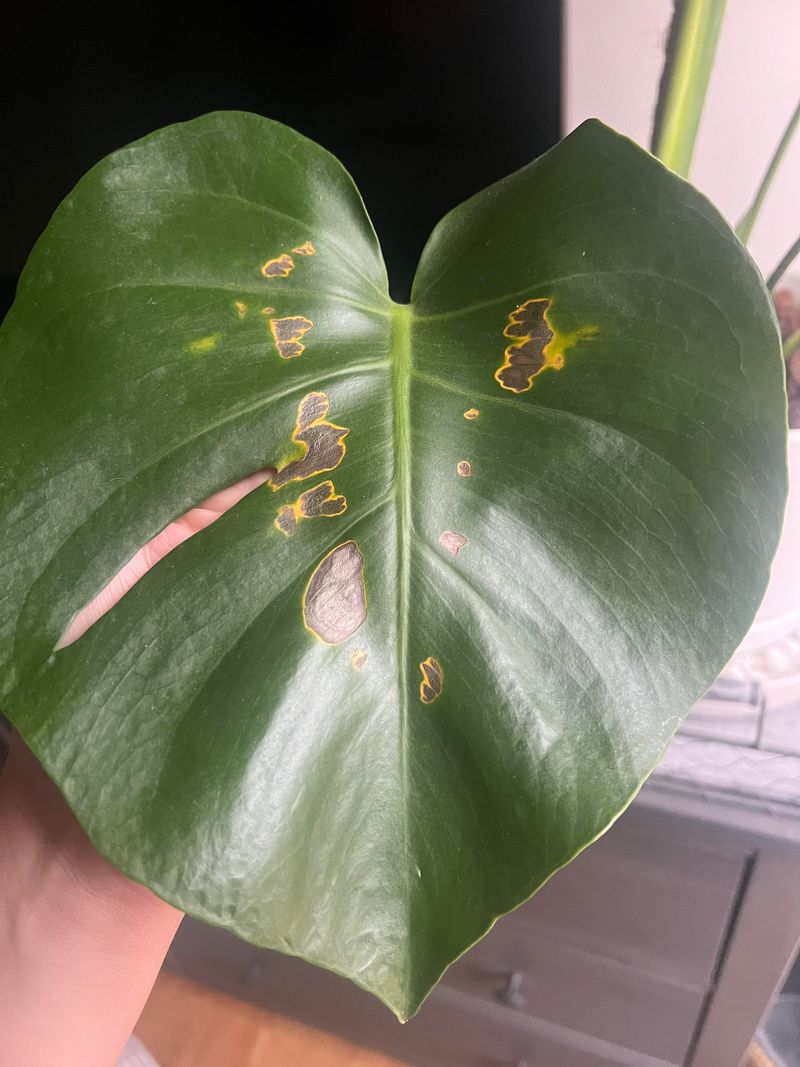Florida’s humidity can feel like paradise, but your houseplants don’t always see it that way. I’ve watched some of mine slump or spot up even when I thought I was doing everything right.
Too much moisture in the air can create problems you don’t notice at first. Once you recognize the early signs, keeping your plants happy gets a whole lot easier.
1. Yellow Leaves Appearing Everywhere
When leaves start turning yellow on multiple plants, excess moisture is often the culprit. Florida homes trap humidity, which prevents soil from drying properly between waterings.
Your plant roots stay too wet for too long, causing them to struggle with nutrient absorption. Check the soil moisture before watering again, and consider using a dehumidifier in rooms with lots of plants.
Moving air around with fans helps too, giving your greenery a better chance to breathe and stay healthy despite Florida’s sticky climate.
2. Fuzzy Mold Growing on Soil Surface
That white or gray fuzzy stuff on top of your potting soil is mold, and it loves Florida’s humid air. Mold spores thrive when moisture levels stay consistently high indoors.
While it usually won’t harm your plant directly, it signals that conditions are too damp. Scrape off the moldy layer and let the soil dry out more between waterings.
Adding perlite to your potting mix improves drainage, and placing plants where air circulates freely helps prevent mold from returning in your Florida home.
3. Soft Brown Spots on Leaves
Brown spots that feel mushy or soft indicate fungal or bacterial problems caused by excessive humidity. Unlike crispy brown spots from dryness, these feel wet to the touch.
Florida’s moisture-heavy air creates perfect conditions for leaf diseases to develop and spread quickly. Remove affected leaves immediately to prevent the issue from spreading to healthy parts.
Increase air circulation with a small fan, and avoid misting your plants since they’re already getting plenty of moisture from your humid Florida environment naturally.
4. Root Rot Setting In
Root rot happens when roots sit in waterlogged soil for extended periods, something Florida humidity makes worse. Pull your plant from its pot and check if roots look dark, mushy, or smell bad.
Healthy roots should be white or light tan and firm. Trim away damaged roots with clean scissors and repot in fresh, well-draining soil.
Consider terracotta pots instead of plastic since they allow moisture to evaporate through the sides, helping combat Florida’s naturally damp indoor conditions throughout the year.
5. Pests Like Fungus Gnats Multiplying
Tiny black flies hovering around your plants are fungus gnats, and they absolutely love damp soil conditions common in Florida homes. Their larvae feed on organic matter in constantly moist potting mix.
Let the top few inches of soil dry completely between waterings to break their breeding cycle. Yellow sticky traps catch adult gnats effectively.
Sprinkling a thin layer of sand on top of the soil also helps since gnats can’t lay eggs through it, giving your Florida houseplants relief from these annoying pests.
6. Wilting Despite Wet Soil
Finding your plant droopy even though the soil feels soaking wet is confusing but common in humid Florida conditions. Overwatered roots can’t absorb oxygen properly, causing the plant to wilt paradoxically.
Stop watering immediately and let the soil dry out significantly. Sometimes repotting with fresh, dry soil becomes necessary if the problem persists.
Adjust your watering schedule to account for Florida’s humidity, checking soil moisture with your finger before adding more water rather than following a strict calendar routine year-round.
7. Slow Growth and Weak Stems
Plants growing slowly with thin, weak stems might be suffering from too much humidity combined with poor air circulation. Florida homes can become stagnant, especially with closed windows during hot months.
Without proper airflow, plants can’t transpire efficiently, weakening their overall structure. Open windows when possible or run ceiling fans to keep air moving.
Rotate plants regularly so all sides receive equal light exposure, encouraging stronger, more balanced growth despite Florida’s challenging indoor climate conditions that naturally favor moisture retention over proper ventilation.








